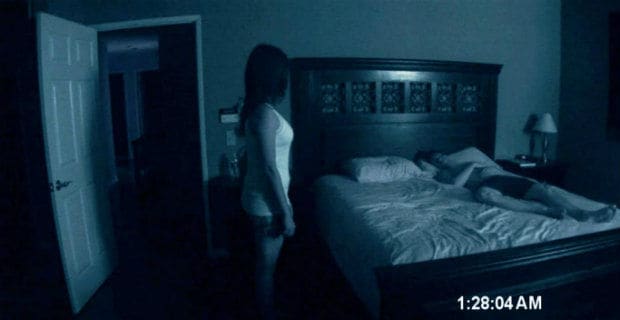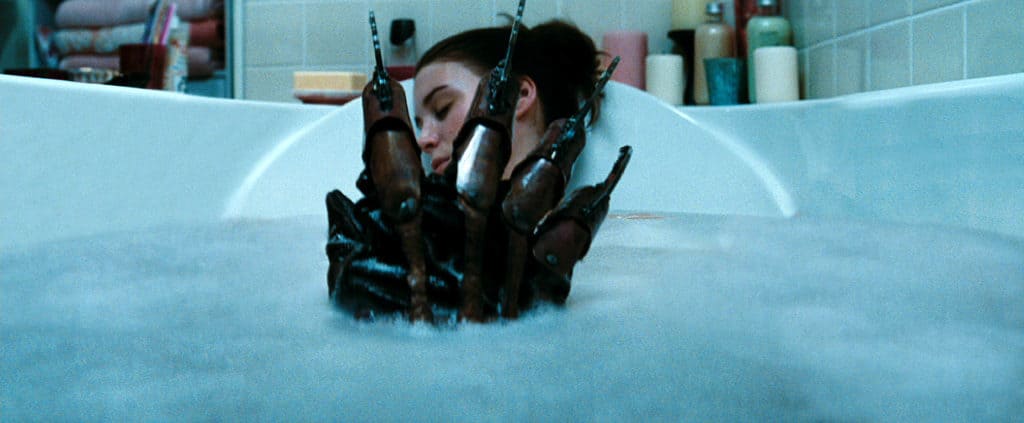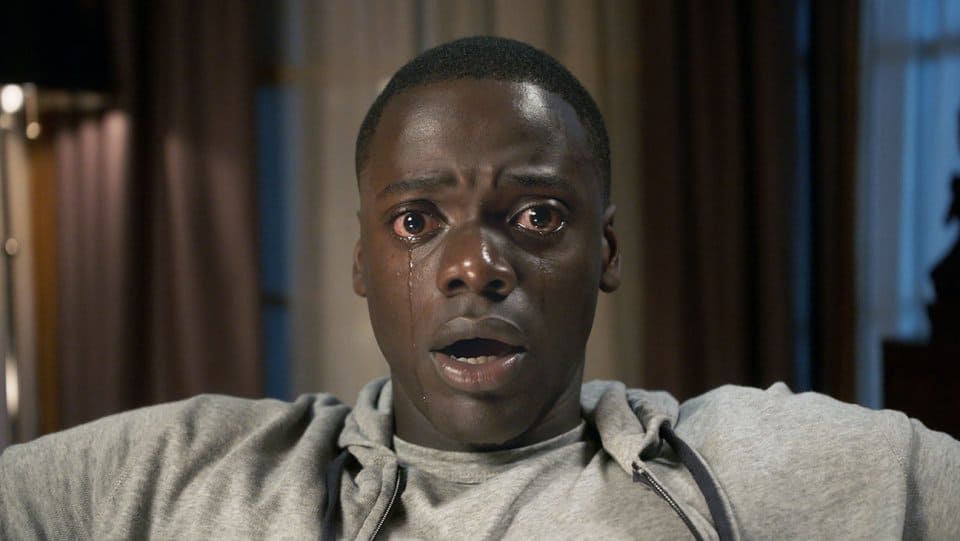Horror films are back like they never left. Classics like The Exorcist in 1973 to Nightmare on elms street in 1984 rocked your parents. Since then horror films haven’t been the same, but a couple of recent hits are bringing this genre back into the spotlight.
Movies like It Follows, Paranormal Activity and Hush brought back horror as a topic of conversation. So if you’re currently writing a horror film or if you about to start one there are a couple of great tips and pitfalls to avoid when writing in this genre.

For this list, I’ve turned it into steps. The first few will get you started if, but level four and over will get you finished. They are as follows:
- Think about what scares you?
- Think about a concept
- Market test your idea with strangers
- Create the atmosphere
- Get rid of all the whys
- Create empathic characters
- Watch horror movies for analysis
- Slower equals scarier
- Use sound effects while writing
- The unknown is always more terrifying
- Don’ t write a bunch of horrifying Scenes
- Don’t be a Copy Cat
- Know the difference between Horror & Thriller
- Don’t use excessive narration or exposition
- No use of Dread
Think about what scares you
We all have fears some irrational fears but still scary to use. Dive deep into your subconscious for this answer. If you say there’s nothing that scares you, then you probably shouldn’t be writing a horror film. Most writers can relate somewhat to the characters there making. Whatever fear you have there are at least 1 million people who have the same fear trust me.
Example think about the film Heredity made by Ari Aster. He took real family drama that he had experienced to intertwine with the concept of devil possession. Which made the film even scarier and because of this some of the drama scenes were scarier than the actual horror itself. In my opinion, the scariest part of the film is when the mother yelled out the truth to her son while having a supernatural experience.
Take a minute and think about your life when was the last time you were scared. Ask yourself:
- Why was I afraid?
- When did the seed of fear start?
- How did it manifest?
- How can you dramatize this?
Think about Concept
Your film doesn’t need this but if you want to sell your screenplay a lot of companies are going after movies with a high concept. Not just horror films but most films now always have this making them unique. What do I mean by the high concept here are a few examples:
A Nightmare Elm Street
The idea is Fredy can only kill you when you’re asleep. Everybody has to sleep. The thought of not sleeping is crazy. This concept alone is scary. The character Fredy himself is a gimmick the idea is how he kills you. If he couldn’t manipulate dreams take a shotgun and end the movie.

Bird Box
This film is more of a thriller than a horror, but I wanted to show you the versatility of high concept. An evil monster that is making people go crazy isn’t a concept its a gimmick. The concept is when you see that the remaining people alive have to survive without using their eyes. It’s almost the opposite idea of A Quiet Place.
Remember the concepts are nice, but if your film is scary with a boss story, this doesn’t matter. I don’t want you to get wrapped up in this idea too much.
Market Test Your ideas to complete strangers
Your idea may seem right to you but may not to others. Rember you’re writing a screenplay for an audience not for yourself. Your plan can be an excellent test to see if you’re on the right path. When doing this exercise, test with mostly strangers. The reasoning for this is people who you don’t know have no obligation to lie to you to spare your feelings. People you know aka your mom will tell you-you’re a genius even if your not. So, in this case, unless you know, the person won’t lie use strangers. How to pitch your idea to people:
1) Pitch your idea within 2 minutes or less.
Give them the logline and a quick breakdown.
2) Do they understand it?
Why or why not? Ask them. Do they have any follow up questions? If yes that’s a good sign that there interested.
3) Gage there reaction
Watch there face expressions. Their eyes will tell you everything you need to know. If their eyes glaze over, then you’re losing them, and If peoples eyes get bigger, then they’re interested.
4) Change or pitch or the story
Based on peoples feedback you might have a new angle to pitch your idea, or even better you see holes in the story that you didn’t see before. You can now to make changes tightening it up the loose ends.
The first three steps are just for the idea development phase. These next steps are for your writing.
Create the Atmosphere
A lot of fan-favorite horror films have a certain atmosphere. The tone and mood can scare people alone. Things that create a great atmosphere are:
1) The Weather
Weather can influence the feeling of a scene. Rain is scarier than sunshine. Blizzards can make a shot seem hopeless; Thunderstorms can make the audience feel trapped. Think of the earth’s natural elements and your feelings toward them.
2) Time of day
The night is significantly scarier than the day time. Why because you can’t see, think about that movie Riddick starring Vin Diesel. The only reason the night scenes had that effect is that of the unknown. The same thing happens with The Blaire Witch Project. Day scenes can work as well just because we wouldn’t expect it. Think about the Insidious film series. It day scenes scared me the most.
3) Location
A foggy location like London works for many scary storylines, and the same goes for the woods in The Hills Have Eyes films. Sometimes the place doesn’t need to be remote a wooden house will do.

4) Space
How big or small the location has a physiological effect on the atmosphere. Very small or huge places represent an uncomfortable feeling to an audience. Think about cramp areas like a vent or big places like a mansion.
The atmosphere doesn’t always have to be exterior. You can think of the relationship between two people in one room that dislike each other to create a feeling of unwelcomeness. Use your creativity remember this is about the feeling you’re giving the reader.
Get Rid of all the Why’s
What does this mean? The why are the issues with all films. Its why Cinema sins exist in the first place. I’ll give you a couple of examples.
Have you ever said to yourself? Why did she go through that door? Why didn’t he grab the knife? These are all questions that make the audience sigh when they see it happen on screen. Think of the last horror film you’ve seen that didn’t have these questions. There are two ways to avoid why questions from an audience.
1) The story was so dam engaging that your neocortex couldn’t see them. Remember the first time you feel in love; the feeling overwhelms your judgment.
2) They got rid of all of them. They thought genuinely about every possible angle in every scenario in the movie and fixed it in the writer’s room.
Keep Empathy in Mind
What scares people the most is if they feel what’s happening can happen to them. There are a couple of ways to do this.
1) Make relatable characters
If the audience can relate tot he characters, then they can see the horror happening to them and thus making your screenplay not scary.
2) Make relatable situations
Goes back to getting rid of all the whys. The situation has to feel real. Think about paranormal activity, the only reason the man stayed is that the women he loved told him too and he couldn’t leave her.
Watch Horror Movies for Analysis
Unless you watch horror movies, you won’t understand the thrill you’re trying to envoke in others. You have to find a couple of films that scares you then analyze them. Reverse engineer why they frightened you. From the characters, the build-up and their situation. This exercise is going to teach you what horror is.
The next two have to do with the pacing of the screenplay. So by this point, your writing away keeps these in mind.
Slower Equals Scarier
Unlike comedy which goes fast scary works better going slow. A build-up of ideas and information keeps people on edge. Think about the last frightening movie you’ve seen. Any of them will do. What was the pacing of the film like? When the pacing of a film is slower you more aware of the little things, like a door that was already open or a man with a mask waiting hiding in the corner.
The power of Sound
The sound is said to be the most underrated aspect of filmmaking. Youtube channel Film Riot did a challenge of filming something with an iPhone but had the perfect sound recording, mixing and folly vs. shooting something with a Red camera worth over 60,000 with using the onboard camera mic. The iPhone film looked better because the sound made it feel better. The sound is 70% of the film.
/cdn.vox-cdn.com/uploads/chorus_image/image/59783681/MAIN.0.jpg)
When writing a horror film, write out sound effects. All the …STRETCHING…..THUMPING… noises that build the anticipation of what’s going to happen. But don’t to overuse this. Yes, you’re going to be using these more than in any other screenplays but save them for the moments that count the reader will get more of an impact.
The Unknown is Scarier than the Known
If you think about what scares people in the world, it always leads to the unknown. Is there life on other planets? What’s in the deepest parts of the ocean? These are things I hear people talk about. The reason their afraid is because of their ignorance. They don’t know the result of what will come of it being discovered.
When writing your screenplay think of which things you want the audience to know and what things are better left unsaid or unseen. In the movie Signs, the reason for why that movie scared so many people is because you couldn’t see the aliens even though you knew they were there. Now this movie does reveal the look of them at the end. But what if they didn’t it could have probably be even scarier like the trailer for Cloverfield.
This section we will go over what you are possibly doing that can ruin your horror screenplay.
Don’ t Write a Bunch of Horrifying Scenes
Rember tip number ten slower equals scarier. If the whole movie is straight horror, it loses its effect. No one’s afraid of the ending of Paranormal activity without the scenes before that intertwined us with the characters. Use horror scenes sparingly.
Don’t be a Copy Cat
The last thing you want is for someone to say when your market testing your idea is, Oh that’s just like this film. No one wants to see something already have seen. And no screenwriter want to hear that they are copying. Use step three over and over to make sure your vision is exciting and unique.
Knowing the difference between Horror & Thriller
Thrillers are more of an adventure and suspense type movie. Horror is full of acts that can repulse the audience. Both of these genres can scare so keep that in mind. Knowing the difference will save you from your horror becoming just a movie with a bunch of suspense scenes. If their character isn’t afraid of being disbodied in some sort of way its a thriller.
Excessive Narration or Exposition
The narration is the action or process of narrating a story. Exposition is the description and explanation of an idea. Both of these in my option ruin all movies yet alone horror movies. By having your character say “oh by the way Jonny died in the creek last year we still don’t know why so don’t go there ok.” That’s ridiculous. There is no suspense when it comes to that, and it gives away the story. Don’t do this, control the information you provide the reader to keep them reading.
No use of Dread
Dread is causing or involving great suffering, fear, or unhappiness; extremely bad or severe. In movie terms making what the audience sees or in this case, reads have suffering fear, etc. The “rising action” effect works great, but you can still rise the action and use dread your hitting the audience from all angles. Think of The movie Hieritiay. When his sisters head was cut off midway through the film.
So for reference to all the information given. Click the links to see and download some admired horror screenplays.
Books on writing horror films that everyone is talking about. Learn from taking a look at these iconic books on horror films.
- Writing the Horror Movie
- On Writing Horror: A Handbook by the Horror Writers Association
- Writing Scary Scenes: Professional Techniques for Thrillers, Horror and Other Exciting Fiction
Get to writing.

